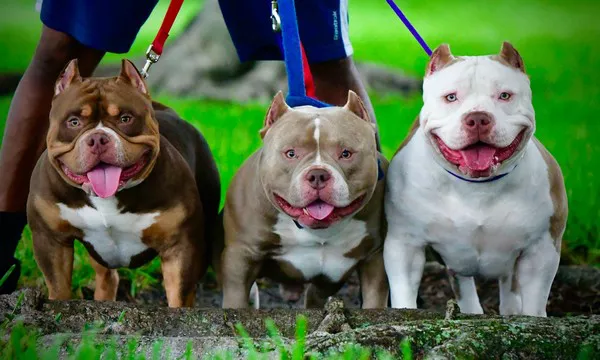Training your American Bully to sit is a fundamental command that establishes discipline and enhances your dog‘s overall behavior. Teaching this simple yet essential command can lay the groundwork for more advanced obedience training and strengthen the bond between you and your canine companion. In this comprehensive guide, we will walk you through the step-by-step process of training your American Bully to sit, using positive reinforcement methods.
Understanding Your American Bully’s Nature
Before delving into the training process, it is crucial to grasp the nature of the American Bully breed. American Bullies are known for their intelligence, loyalty, and eagerness to please their owners. They respond exceptionally well to positive reinforcement and crave human interaction. However, they can also be strong-willed and stubborn at times. It is essential to be patient, consistent, and gentle while training your Bully.
Preparation and Setting the Stage
Choose the Right Environment: Start the training process in a quiet, distraction-free environment to help your Bully focus solely on you and the training session.
Gather Treats: Positive reinforcement is a powerful tool in dog training. Stock up on small, tasty treats that your Bully loves. These will serve as rewards during the training process.
Use a Clicker (Optional): A clicker can be an effective tool to mark the exact moment your dog exhibits the desired behavior. If you decide to use a clicker, ensure your Bully associates the sound with treats and praise.
The Training Process
Step 1: Capture Attention
To begin, make sure your Bully is calm and attentive. Hold a treat close to their nose, allowing them to sniff it. Slowly move the treat up and slightly backward, which will naturally lead your Bully to sit down.
As your Bully starts to sit, use a verbal cue like “sit” in a clear and positive tone. Be consistent with this cue so that your Bully begins to associate the word with the action.
Step 2: Reward and Praise
The moment your American Bully’s hindquarters touch the ground, reward them with the treat and lavish praise. Timing is crucial; the reward and praise should come instantly after your Bully sits. This positive reinforcement will reinforce the behavior and motivate your dog to repeat it in the future.
Step 3: Repetition and Practice
Repeat the process several times in a single training session. Keep the sessions short, around 5-10 minutes, to prevent your Bully from becoming bored or fatigued. Training should be a fun and positive experience for both you and your dog.
Step 4: Hand Signal and Verbal Cue
Once your Bully starts sitting consistently in response to the verbal cue, you can introduce a hand signal to accompany the command. For example, raise your hand with the palm facing upward when giving the “sit” command. Pairing a hand signal with the verbal cue will make the command more effective and versatile, especially in noisy or crowded environments.
Step 5: Gradual Elimination of Treats
As your Bully becomes more proficient in sitting on command, begin to reduce the frequency of treat rewards gradually. Instead, increase the frequency of verbal praise and affectionate gestures. This transition will help your Bully respond to the command without the expectation of a treat every time.
Step 6: Introduce Distractions
Once your Bully can sit reliably in a controlled environment, start introducing mild distractions. For example, perform the training in the presence of other family members or with mild noises in the background. This step will teach your Bully to focus on your command even amid distractions, strengthening their obedience.
Step 7: Consistency is Key
Consistency is vital throughout the training process. Use the same verbal cue and hand signal each time you ask your Bully to sit. Make sure all family members and caregivers are on the same page regarding the training techniques to avoid confusing your Bully.
Common Challenges and Troubleshooting
During the training process, you might encounter some challenges. Here are a few common issues and how to address them:
Lack of Interest: If your Bully seems uninterested in the treats or training, try using higher-value treats or find a more engaging reward like a favorite toy.
Distractions: If your Bully gets easily distracted, return to a quieter environment and gradually reintroduce distractions once they have mastered the command in a controlled setting.
Inconsistent Response: If your Bully responds inconsistently to the “sit” command, review your own consistency in delivering cues and rewards. Make sure you’re rewarding the behavior every time they respond correctly.
Pushy Behavior: Some American Bullies may exhibit pushy behavior when trying to get the treat. If this happens, refrain from rewarding until they are calm and sitting. Rewarding pushiness may encourage undesirable behavior.
Physical Limitations: If your Bully has physical limitations that make sitting difficult or uncomfortable, consult your veterinarian to ensure there are no underlying health issues.
Conclusion
Training your American Bully to sit is a rewarding experience that sets the stage for more advanced obedience training and strengthens your bond. Remember to be patient, consistent, and use positive reinforcement throughout the process. Celebrate each small success, and tailor the training to suit your Bully’s individual needs. With time, practice, and love, your Bully will master the “sit” command and become a well-behaved and happy companion for life.


